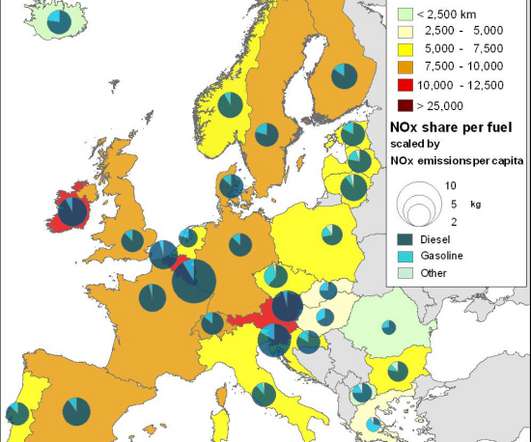T&E study finds cruise ships emitting 10x more SOx in Europe port cities than all Europe’s 260M cars
Green Car Congress
JUNE 9, 2019
Spain, Italy, Greece, France and Norway are the most exposed countries to cruise ship air pollution in Europe. Among the major cruise ports, Barcelona, Palma Mallorca and Venice are the most polluted. Cruise ships also emit NO x equivalent to 15% of Europe’s car fleet every year. million passenger vehicles in a year.












Let's personalize your content